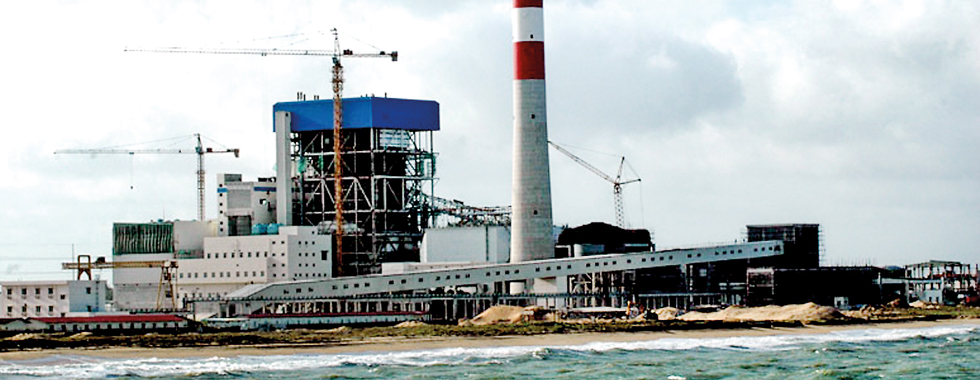Sampur Coal Power Project – Economic investment or sinister move
India is already having problems with a shortage of coal to run their own coal power plants. It is intriguing why they have gone to other countries to install coal power projects.
As a professional in this field I am aware that the coal fields in India have a high ash content compared to other coal fields in the world. Therefore Sri Lanka should think twice before taking a final decision (on the Sampur coal power project) because of high ash content results in very high pollution.
The Indian coal plants with high ash content emit more smoke which consists of carbon dioxide carbon monoxide and sulphur dioxide to the atmosphere. These gases spread and mix freely in the sky and have adverse impacts on the environment. A study released in March estimated smoke pouring from India’s power plants kills up to 120.000 people annually.
The coal power plants have disastrous effects to the environment and results in global warming.
Environmentalists and scientists protested many years against coal power for energy but they are at the receiving end as politicians take decisions. This is why the 2009 Copenhagen summit on global warming collapsed with no decisions.
Coal provides 30.3 per cent of primary energy needs and generates 42 per cent of the world energy electricity.
Coal is a major fuel used in generating electricity in the world. Australia and Indonesia are the largest exporters of coal in the world. Since India has a shortage of coal for their own consumption, it had imported some 105 metric tons of coal in 2011 from other countries such as Indonesia and Australia.
How is Sri Lanka going to run its coal power plants if there is a short supply of coal from India? An Indian newspaper last month gave a good account on how the Cabinet Sub Committee on Economic Affairs (CCEA) has now permitted Coal India Ltd (CIL) to import coal to make up for the shortfall in domestic availability.
The most significant characteristic of Indian coal is its high ash content, which varies from 35 to 45 per cent, compared with that of coal in other parts of the world, which is around 15 per cent.
With legislation requiring, since June 2001 that thermal power plants should use coal with less than 35 per cent ash content, and with the quality of Indian coal deteriorating over the years, development of more efficient technologies that can handle high-ash Indian coal, such as Integrated Gasification Combined Cycle, becomes important.
Besides high ash content, another reason for entrained gasifiers (that operate at higher temperatures than fluidised bed gasifiers), commonly used in IGCC plants abroad, being not suitable for Indian coal is its high ash fusion temperature.
The ash chemistry of Indian coal is such that it is high in silica and alumina. The ash is also highly abrasive because of high quartz content, which can lead to erosion of the syngas cooling system.
Former Power and Energy Minister Champika Ranawaka said he was aware that the figures relating to technical parameters such as heat rate’ and ‘O&M costs’ could not be discussed and agreed, before the completion of the Feasibility Study conducted by the Indian NTPC Co. However, some officers in the CEB and the Ministry had agreed with the Indian NTPC Company on ‘heat rate value’ and ‘O&M costs value’ even before submitting the Feasibility Study Report (FSR).
In view of the importance of the issues raised by the CEB, the former Minister had apprised President Mahinda Rajapaksa of these facts by a letter dated 20-09-2012. Through that letter, he had informed the President about the unprofessional way of handling the Sampur power project and had told him that it may lead to diplomatic level issues with our neighbour- India. As the situation deteriorated further, Mr. Ranawaka had sent another letter to the President on January 1, 2013, highlighting the issues associated with the Sampur Power Project
Sampur village is located south to the Trincomalle and is in the north east of Sri-Lanka separated by a large bay with sea. It was once a military base of the LTTE firing rockets to the Navy military camp. Why did the LTTE use this place? Obviously for strategic interests and to keep an eye on the movements of ships entering the Trincomalee harbour. It is not a figment of imagination that the place was carefully chosen by India for strategic political reasons,
Today the time has come as Sri Lankans to take right decisions both technically and politically to secure the long term interest of the country. We should not give in to the demands of vested interests that undermine the national interests from whatever quarter the demands come.
(The writer is now domiciled in Australia)
Follow @timesonlinelk
comments powered by Disqus


